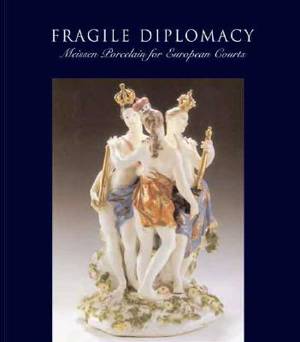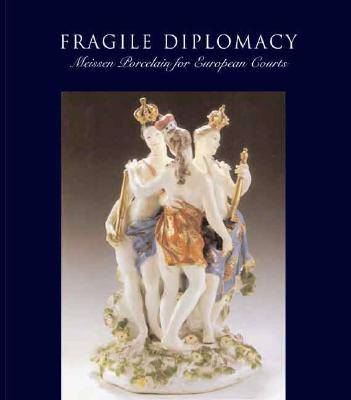
- Retrait gratuit dans votre magasin Club
- 7.000.000 titres dans notre catalogue
- Payer en toute sécurité
- Toujours un magasin près de chez vous
- Retrait gratuit dans votre magasin Club
- 7.000.0000 titres dans notre catalogue
- Payer en toute sécurité
- Toujours un magasin près de chez vous
Fragile Diplomacy
Meissen Porcelain for European Courts
Description
While imported Chinese porcelain had become a valuable commodity in Europe in the seventeenth century, local attempts to produce porcelain long remained unsuccessful. At last the secret of hard-paste porcelain was uncovered, and in 1710 the first European porcelain was manufactured in Saxony. Meissen porcelain, still manufactured today, soon ranked in value with silver and gold.
This thorough and lavishly illustrated volume explores the early years of Meissen porcelain and how the princes of Saxony came to use highly prized porcelain pieces as diplomatic gifts for presentation to foreign courts. An eminent team of international contributors examines the trade of Meissen with other nations, from England to Russia. They also investigate the cultural ambience of the Dresden Court, varying tastes of the markets, the wide range of porcelain objects, and their designers and makers. Individual chapters are devoted to gifts to Denmark, other German courts, the Holy Roman Empire, Italy, France, and other nations. For every Meissen collector or enthusiast, this book will be not only a treasured handbook but also a source of visual delight.
Published in association with the Bard Graduate Center for Studies in the Decorative Arts, Design, and Culture
Exhibition Schedule:
Bard Graduate Center for Studies in the Decorative Arts, Design, and Culture(November 15, 2007 - February 11, 2008)
Spécifications
Parties prenantes
- Editeur:
Contenu
- Nombre de pages :
- 400
- Langue:
- Anglais
- Collection :
Caractéristiques
- EAN:
- 9780300126815
- Date de parution :
- 01-01-08
- Format:
- Livre relié
- Format numérique:
- Genaaid
- Dimensions :
- 248 mm x 288 mm
- Poids :
- 2163 g

Les avis
Nous publions uniquement les avis qui respectent les conditions requises. Consultez nos conditions pour les avis.





